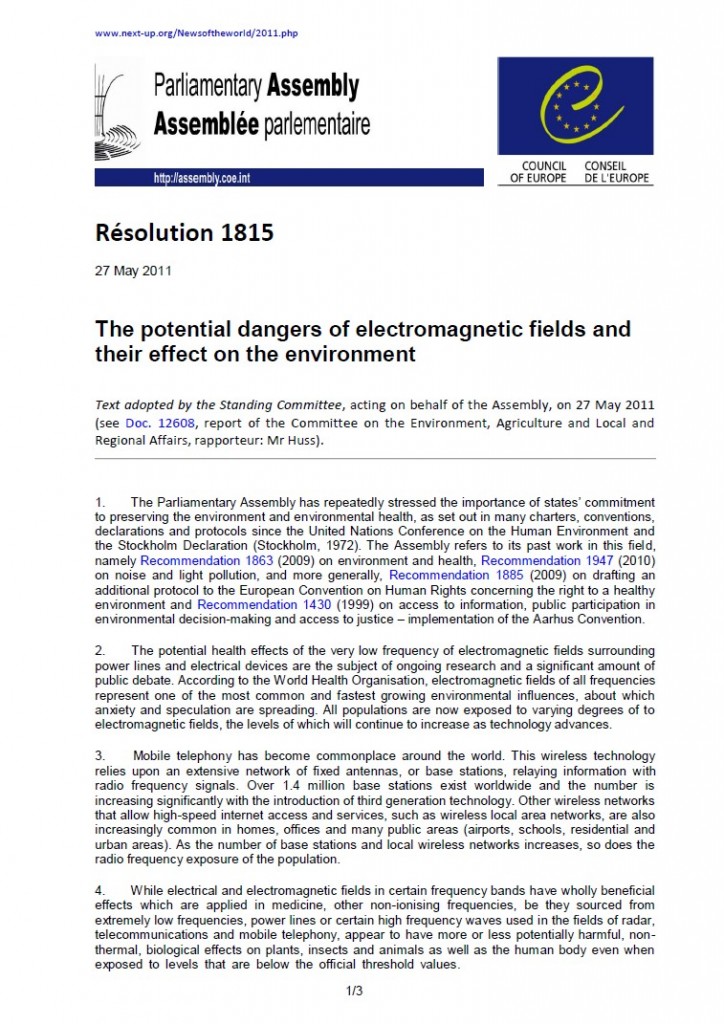Portada del sitio > Fauna > Efectos de las radiaciones de telefonía sobre la reproducción y el (...)
Electromagnetic Biology and Medicine, 24: 109-119, 2005
Efectos de las radiaciones de telefonía sobre la reproducción y el comportamiento de las cigueñas / Possible Effects of Electromagnetic Fields from Phone Masts on a Population of White Stork (Ciconia ciconia)
Miércoles 2 de agosto de 2006 · 1570 lecturas
Monitoring of a white stork population in Valladolid (Spain) in the vicinity of
Cellular Phone Base Stations was carried out, with the objective of detecting
possible effects. The total productivity, in the nests located within 200meters of
antennae, was 0-86 � 0-16. For those located further than 300m, the result was
practically doubled, with an average of 1-6 � 0-14. Very significant differences
among the total productivity were found (U = 240- p = 0-001, Mann-Whitney test).
In partial productivity, an average of 1-44 � 0-16 was obtained for the first group
(within 200m of antennae) and of 1-65 � 0-13 for the second (further than 300m
of antennae), respectively. The difference between both groups of nests in this case
were not statistically significant (U = 216- P = 0-26, Mann-Whitney Test U). Twelve
nests (40%) located within than 200m of antennae never had chicks, while only one
(3.3%) located further than 300m had no chicks. The electric field intensity was
higher on nests within 200m (2-36 � 0-82V/m) than on nests further than 300m
(0-53 � 0-82V/m). Interesting behavioral observations of the white stork nesting sites
located within 100m of one or several cellsite antennae were carried out. These
results are compatible with the possibility that microwaves are interfering with
the reproduction of white storks and would corroborate the results of laboratory
research by other authors.







